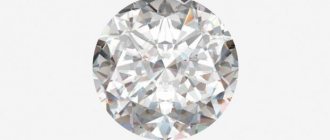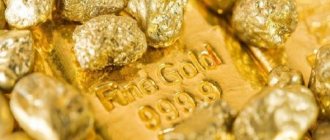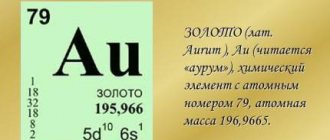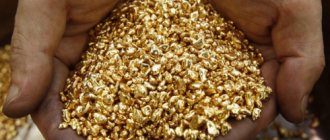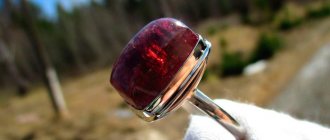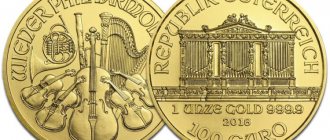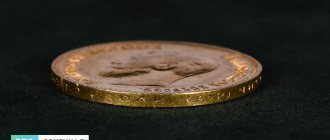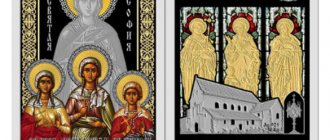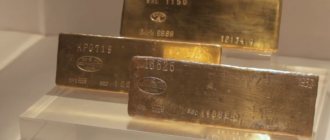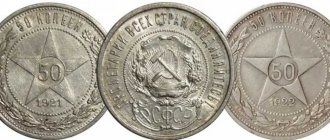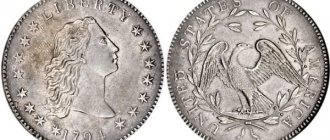In 1701, the first gold coins of Tsarist Russia replaced the standard hryvnias and rubles. Peter I began minting them, and did it with special elegance and beauty. From that time on, the fashion began among each of the following emperors to make their own coins. During the reign of Nicholas II, about 20 types of them were made, 10 of which were made of gold.
The coins were issued in different editions; at the moment, a certain part of them has entered private circulation. The cost began to be determined depending on the circulation and their remaining quantity.
The rarer the copy, the more it costs. The price per unit can reach up to 2 hundred thousand USD. that is, or even more.
Currency "Rus"
There is information that Nicholas II had a reputation as an indecisive king. This happened due to uncertainty in making any responsible decisions or changing them. This behavior more than once confused all the people at court.
This could not but affect the financial side of the issue. The tsar had an idea to replace the ruble with a new unit of currency - “rus”. But the coins did not enter full circulation because Nikolai did not like them. It is noted that the trial batch of “Russies” was distinguished by an unusually beautiful appearance, but in the end it was never widely used.
Today, it is the coins of this trial run that are especially valuable; the surviving money can have a fabulous value - up to 500,000 conventional units.
“Rus” were produced in 3 denominations: 5 rubles, 10 and 15. The main purpose of the currency and all changes regarding the abolition of the ruble was to create a distraction from the rising price of imperials.
Each of the 5 sets already has its own owners. Some of them are in the State Museum of Russian History, others are in the Hermitage and the Smithsonian Museum in the United States of America. Two sets of “Russ” are in the hands of private owners, and it is not yet known who owns one of them.
Chervonets made of gold 1899
In total, about 27 million gold coins were issued. The subject for such a circulation was the need to fill the state budget. It was decided to allocate the bulk of the funds to improve defense capabilities and develop the national economy.
By the decision of the emperor, the royal gold coins became lighter. The previous weight of 12.9 grams decreased to 8.6. All chervonets included 900-carat gold.
Character traits:
- Thickness – 1.7 mm.
- Size – 22.6 mm.
- On one side is the coat of arms of the Republic of Ingushetia, the words “10 rubles” and the year of production “1899”.
- On the other is a portrait of the ruler and two phrases on the sides.
- On the edge there are the words: “1 spool 78.24 shares” and the abbreviation of the ministry.
As a result, these gold coins became as popular as paper money. This was due to the large circulation, which was renewed several more times between 1899 and 1911.
10 rubles 1906
Another chervonets, called the royal coin, was made in 1906. But it was produced in only 10 copies. Therefore the value will be significantly higher than the 1988 coin due to its extreme rarity.
Externally, the chervonets differ from each other only in a couple of features, the year of issue indicated under the coat of arms and the inscription on the edge. The 1906 coin has the abbreviation “AR”, that is, Alexander Redko, who at that time held the position of mintzmeister.
The question always arises, why were there so few coins issued? This is explained by the fact that the circulation was a trial one. It was possible to continue, but a few years later, in 1909.
First foreign coins
Late 8th - early 9th century
1 / 3
Silver dirham of the Abbasid caliph al-Mahdi. Madinat al-Salam (Baghdad), 776–777 reviewdetector.ru
2 / 3
Silver miliary of John I Tzimisces. Byzantine Empire, 969–976 reviewdetector.ru
3 / 3
Silver denarius of Henry II. Bavaria, Regensburg, 1002–1024 reviewdetector.ru
Along with the emergence of the first ancient Russian settlements at the end of the 8th - beginning of the 9th century, foreign coins appeared on their territories. First of all, these are Kufic Kufic coins - coins made of silver, gold or copper, on which there were inscriptions in Kufic (Arabic) script. They were produced by various Muslim dynasties in the 7th–11th centuries. silver coins (dirhams), which were imported in large quantities by Muslim merchants from the Middle East and Central Asia and their trading partners and intermediaries from the Khazar Kaganate, and from the 10th century - from Volga Bulgaria. In Islamic issuing states, the Issuer is the one who issues (issues) banknotes, securities, etc. gold coins were called dinars, silver coins were called dirhams, and copper coins were called fals.
Dirhams became very popular in Ancient Rus', they were used as a means of payment, worn as jewelry and melted down. With them, merchants purchased furs, which were highly valued in the Muslim East, slaves, honey and other goods. Close ties with the Byzantine Empire contributed to the acquaintance of the population of Rus' with its gold (solida), silver (miliaris) and copper (follis) coins. From the second half of the 10th century, silver denarii began to arrive from Western European countries.
Prices
When holding auctions among numismatists, the 1906 chervonets minted has a starting price of $20,000 per copy.
At one auction in St. Petersburg in 2015, $200,000 was paid for a copy. Thus, the chervonets gained a reputation as one of the rarest and most expensive banknotes of the past.
There were many other coins issued by Nicholas II in 1898, 1901 and 1895. But their number reached several million pieces. Therefore, they have no value greater than the price of the precious metal used in coinage. On average, a chervonets can be bought for 15,000-20,000 thousand rubles.
The table shows the cost of other valuable banknotes of various states of preservation, which were produced by Nicholas II in different years of his reign:
| Year | Coin | Very good | Excellent | Almost excellent | Excellent | Proof |
| 1911 | Chervonets (EB) | 22 281 | 28 520 | 29 740 | 47 571 | 152 321 |
| 1911 | 5 rubles (EB) | 141 332 | 175 145 | 236 453 | 320 592 | 337 357 |
| 1910 | Chervonets (EB) | 32 000 | 90 791 | 139 361 | 151 298 | 640 316 |
| 1910 | 5 rubles (EB) | 12 680 | 38 275 | 86 359 | 95 817 | — |
| 1909 | Chervonets (EB) | 23 158 | 39 856 | 48 456 | 72 058 | 597 682 |
| 1909 | 5 rubles (EB) | 13 838 | 31 069 | 37 104 | 64 374 | 649 578 |
| 1903 | Chervonets (AR) | 16 931 | 29 119 | 27 335 | 54 030 | 1.09 million |
| 1901 | 5 rubles (AR) | 15 600 | 20191 | 22 915 | 25 824 | 169 529 |
| 1897 | 5 rubles (AG) | 10 209 | 12 694 | 13 799 | 28 439 | 92 927 |
Development of coinage
Starting from the 9th century, imported money was used in Rus'. For a short period in the 10th-11th centuries, gold and silver coins were minted. There were also silver bars called hryvnias.
In the XII-XIV centuries, Rus' did not have its own coin; this was the period of the Tatar-Mongol yoke, when a significant share of the precious metal went as tribute. From the end of the 14th century, Rus' carefully began producing its own coins - small and lightweight “scales” (they can be considered a prototype of future kopecks). The scales did not have a constant standard weight. Russian princes, and later tsars, constantly reduced their mass in order to save on consumable material. Often, to determine the true value, scales were paid by weight.
Tsar Ivan III issues his own gold coins, but these are not means of payment, but award signs (medals). Their appearance is similar to money: on one side there is a portrait of the sovereign, on the other - a double-headed eagle.
The centralized minting of banknotes began in the 16th century by John IV (the Terrible). He brought the scales to a single pattern, but they noticeably decreased in weight.
Over time, attempts are being made at monetary reforms, the goals of which are to enlarge coins, as well as introduce the use of copper and gold for their minting. Gold money and kopecks (“Novgorodki” and “Moscow coins”) of Vasily Shuisky appeared - 1610, silver rubles and copper kopecks, altyns, pennies of Tsar Alexei Mikhailovich - 1654, silver “Efimki with a sign” (countered on Western European thalers) - 1655
Semi-imperials
There is a misconception among new numismatists that a semi-imperial is exclusively a 5-ruble coin made of gold. This is not entirely true: after the reform in 1897, it was also given the denomination of 7.5 rubles.
Genuine semi-imperials are distinguished by a corresponding inscription on one side. They were issued by Nicholas II exclusively between 1895 and 1897. 36 copies were made in each year.
What does history show?
You may be interested in: Procurement budget: the essence of compilation, indicators and formation
It proves with indisputable accuracy that the world's oldest coins originated in Asia Minor (roughly the territory of modern Turkey). Who was the first to create a coin? What legends exist about its creation? You will find out the answers to these questions by reading the entire article.
What is on the money?
- The front side was a portrait of the ruler and two phrases around him.
- Size – 21.3 mm.
- Gold per coin – 5.8 grams.
- On the edge there is a phrase - “Pure gold 1 spool 34.68 shares (A.G.).”
The royal 5 rubles are quite rare, so their value can reach 150-200 thousand dollars. At the same time, it is observed that the price is rising every year.
In Ukraine it reaches 5,200,000 hryvnia. Also, the condition of the semi-imperial may affect the amount offered: if it is perfect, the coin will be sold at a higher price.
First own coins
End of the 10th century
1 / 4
Obverse and reverse of Vladimir Svyatoslavich's gold medal. 980–1015 © Exhibition project “Holy Russia”
2 / 4
Obverse and reverse of Vladimir Svyatoslavich's silver coin. 980–1015 © Exhibition project “Holy Russia”
3 / 4
Solidus of Vasily II. 1005–1025 © 2014 Dumbarton Oaks, Washington DC / Trustees for Harvard University
4 / 4
Solidus of Constantine VIII. 1025–1028 © 2014 Dumbarton Oaks, Washington DC / Trustees for Harvard University
The issue of the first Russian coins, called zlatniks and srebreniks, was carried out under Prince Vladimir Svyatoslavich (Vladimir the Great). The Byzantine solidi of the emperors Basil II (958–1025) and his co-ruler Constantine VIII (960–1028) served as the prototype for their pictorial composition. The Zlatniks also corresponded to them in terms of their standard The standard is the number of grams of gold per kilogram of alloy. - 916–958, and weight -4–4.4 grams). On the front side of the coins of the first issue, a prince was depicted with an explanatory inscription: “Vladimir is on the table, that is, on the throne.”, or “Vladimir, and this is his gold,” or “Vladimir, and this is his silver.” A princely family sign in the form of a trident was placed above his left shoulder. On the reverse side there was an image of Christ Pantocrator. Subsequently, zlatniks were no longer minted, but the production of silver coins continued. Subsequent issues on the reverse side, instead of Christ, bore the image of a trident and the standard inscription: “Vladimir is on the table, and behold his silver.”
Imperials
Imperials were produced in the same years as semi-imperials. But a little more than half of them were produced, namely 125 pieces.
How much does such a coin cost? Although the circulation was not distinguished by a small number of copies, it is very popular among collectors.
Therefore, the price for it is quite high, and starts at 50 thousand USD. e. And its maximum value reached 250,000 dollars or 14.5 million Russian rubles.
Many may feel that the price is not well thought out and that the coin does not have the value that is attributed to it. Only an experienced numismatist can adequately explain why this monetary unit is so valued among collectors.
37.5 rubles
These are the same 100 francs. A circulation of two hundred and thirty-five pieces was released in 1902. Their appearance has much in common with the 1896 commemorative coin, which had the same weight but a different denomination.
At that time, the franc suffered a high level of inflation, so it is not entirely clear why Nicholas II decided to make a coin of such a denomination, taking into account the inflation of a foreign country. Almost every one of them fell into the hands of senior St. Petersburg and Moscow officials, and the other part went to casino gaming rooms, where bets were accepted only in francs.
Nowadays, the coin is valued at 130-170 thousand dollars. At the same time, it is quite difficult to buy it; the competition at auctions for 37.5 rubles of that time was very tough.
Monetary reform of Peter the Great
In pre-Petrine times, the ruble was not a means of payment, but only a unit of account. During the reign of Tsar Peter Alekseevich Romanov, their own rubles and chervonets appeared in circulation. The word “ruble” comes from the verb “to chop” (they chopped part of the silver hryvnia). The stump of the hryvnia - the ruble - has been used as a monetary unit since the 13th century.
Peter the Great managed to successfully carry out financial reform, the result of which is noted:
- introduction of industrial (machine) coin production;
- consolidation of banknotes;
- the emergence of the ruble as a monetary rather than a unit of account;
- clear equation of 100 kopecks to 1 ruble;
- minting of gold chervonets.
The first regular gold coins of the Russian Empire - chervonets - were issued in 1701 in the amount of 118 pieces. There is only one known copy of Peter the Great's chervonets in gold (issued in 1706), on which the date is indicated in letters. It is kept in the Vienna City Museum. However, according to other versions, similar specimens exist in varying states and are kept by private Russian collectors.
Traditionally in Russia, large gold coins of foreign and domestic production were called chervonets due to the reddish tint of the metal inherent in the material of high standard (“chervonnoe gold”).
Peter I adopted a lot from the enlightened Dutch and, applying new knowledge in practice, introduced coins very similar to Dutch ducats. But the very first chervonets, issued by the great reformer in 1701, were copied from the Hungarian ducat (Ugric, Ugric gold) in full compliance in weight (3.47 g) and gold purity (986).
The denomination on these coins was not indicated, but the gold chervonets circulated in Peter’s times as 2 rubles 30 kopecks. They were minted from 1701 to 1716. It was not very convenient to use them, because two rubles at that time was a significant amount, so they were not popular among the people. In addition, a “double chervonets” was minted, its mass was 6.94 g.
Since 1718, chervonets were replaced by 2 gold rubles. The denomination is almost the same, but the purity is lower. They already have a clear inscription of the denomination.
The first paper money in Russia
Two days before the onset of 1769, Empress Catherine II issues a Manifesto, where, under the condition of the need to exchange copper coins for banknotes that are convenient for transportation, paper money is introduced into circulation. The new banknotes are rather not the banknote we are used to, but only an obligation to exchange this paper for a coin in the amount indicated on it. Indeed, payments in copper were a difficult operation, because the amount of 100 rubles in five-kopeck coins weighed more than six poods (almost a centner). The novelty quickly became fashionable, and for some period people even paid more than the amount indicated on it for a paper note. But the simplicity of their manufacture has given rise to numerous fakes. In addition, the government itself flooded the turnover with unsecured money due to the costs of the war with Turkey. The rate of paper money in relation to copper began to decline steadily, reaching 68.5 copper kopecks per ruble in banknotes in the last year of the queen's reign. Paul the First had to deal with the paper mass.
The first bimetallic money in Russia
The State Hermitage exhibit houses an amazing copper coin. On the chest of the Russian double-headed eagle there is an insert of yellow metal, not too noticeable against the background of red copper. This is a test coin of Anna Ioannovna. It can be considered the first bimetallic coin in Russia. However, the high cost of production forced us to abandon such a protective element. And Anna Ioannovna did not have long to sit on the throne. Therefore, domestic numismatists write this nickel into the category “once does not count.” But when did bimetal begin to be used in mass quantities?
The standard set by the 1961 reform did not require USSR coins made of two or more metals. Everything changed in 1991, when the government, frantically looking for ways out of the protracted economic crisis, was forced to raise prices. There was a need for new denominations. The largest of the newly introduced coin series was 10 rubles. To protect against counterfeiting, they decided to use a method that had already been successfully tested by Western countries. The coin began to be assembled from two parts - an internal insert (brass) and a copper-nickel ring. The date “1991” also appears on two bimetallic 5-ruble coins that open the “Red Book” series.
Nogata
Another small coin was the nogata - it was worth about a twentieth of a hryvnia. Its name is usually associated with the Estonian nahat - fur. In all likelihood, nogata was also originally the fur skin of some animal. It is noteworthy that in the presence of all kinds of small money, they tried to associate every thing with their money. In the “Tale of Igor’s Campaign,” for example, it is said that if Vsevolod were on the throne, then the price of a slave would be “at the price,” and the price for a slave would be “at a price.” Tags: money • interesting • history • coins • past • Rus'
Rezana
The problem of accurate calculation in Rus' was solved in its own way. For example, they cut the skin of a marten or other fur-bearing animal, thereby adjusting a piece of fur to a particular price. Such pieces were called rezans. And since the fur skin and the Arab dirham were equivalent, the coin was also divided into parts. To this day, halves and even quarters of dirhams are found in ancient Russian treasures, because the Arab coin was too large for small trade transactions.
Historical and market value of individual specimens
Even at the turn of the 10th-11th centuries, Prince Vladimir minted “zolotnik” (or “zlatnik”). Only 11 copies of this first ancient Russian gold coin have been found. The only copy of the “shipman” - the medal of Ivan III Vasilyevich, minted between 1471 and 1490 - is kept in the Hermitage. The golden chervonets of Peter I remains desirable for many collectors. These rare specimens at auctions reach prices of up to several hundred thousand dollars, depending on their condition and year of issue.
Almost each of the subsequent sovereigns of the Russian Empire printed rubles, chervonets or imperials from gold. From 1828 to 1845, during the reign of Nicholas I, “white chervonets” were issued, now classified as numismatic rarities. During a period of acute shortage of precious metals, the idea arose of producing coins from platinum, which was mined in large quantities in the Urals. The denomination indicated on them is interesting: “3 rubles for silver.” Soon “6...” and “12 rubles for silver” appeared. On the obverse is the coat of arms of Russia: an eagle with two heads. They were 97% pure platinum. One of the first test copies of the “white chervonets” has been preserved; it is exhibited in the Hermitage (St. Petersburg).
The preserved Rus of Nicholas II are highly valued (about 500 thousand dollars at auctions). There are only five sets of them. The owners of three of them are museums in Russia (the State Historical Museum and the Hermitage) and the USA (the Smithsonian Museum). Another set is in a private collection. The fate of the fifth is unknown. According to one version, it was divided into separate coins and sold to different collectors.
At all times, and especially now, coins of the Russian Empire arouse interest and are in considerable demand among both domestic and foreign numismatists. Not too many examples of imperial coinage art have survived to this day. After all, the money of those times was printed from pure metals with a small amount of impurities, so over the years they were often melted down or used to make jewelry. With particular interest, collectors “chase” gold rarities that were produced purely for palace use. In modern times, they can be found in single copies, which makes them very expensive at auctions.
But it’s not only the high market value of ancient coins from Tsarist Russia that inspires admiration. Imperial coin production, starting from the reign of Peter I and until the tragic end of the reign of Nicholas II, gave the world magnificent examples of monetary circulation - real works of art created by masters of their craft.
Kuna
The eastern dirham was also used in Russian lands. It, and also the European denarius, which was also popular, was called kuna in Rus'. There is a version that the kuna was originally the skin of a marten, squirrel or fox with a princely mark. But there are other versions related to the foreign origin of the name kuna. For example, many other peoples who had the Roman denarius in circulation have a name for the coin that is consonant with the Russian kuna, for example, the English coin.
The first plastic rubles
The first plastic rubles made from composite materials, made by domestic specialists using the “Plamet” technology, ended up in the wallets of not Russians, but residents of Transnistria. A large-scale experiment in 2014 was supposed to test how the population would perceive the new format of money. The era of metal coins is gradually coming to an end. The high cost of metal forces us to look for cheaper substitutes. According to manufacturers, there are simply no flaws in polymer coins. But coins have been circulating in the PMR for five years now, and the Bank of Russia has not decided to replace metal with plastic in internal monetary circulation.
But plastic money still came to Russia in the form of a commemorative banknote, which was issued for the 2021 football championship. It is this hundred-ruble note that is the first and so far the only sign in domestic monetary circulation. However, its influence on cash flow cannot be called significant. After all, almost all 20,000,000 banknotes are not in cash registers, but are displayed in the windows of numismatic stores. However, I would like to hope that the heyday of plastic money in Russia is just around the corner.

